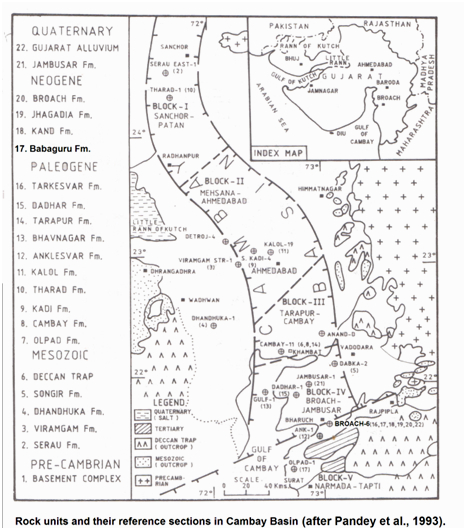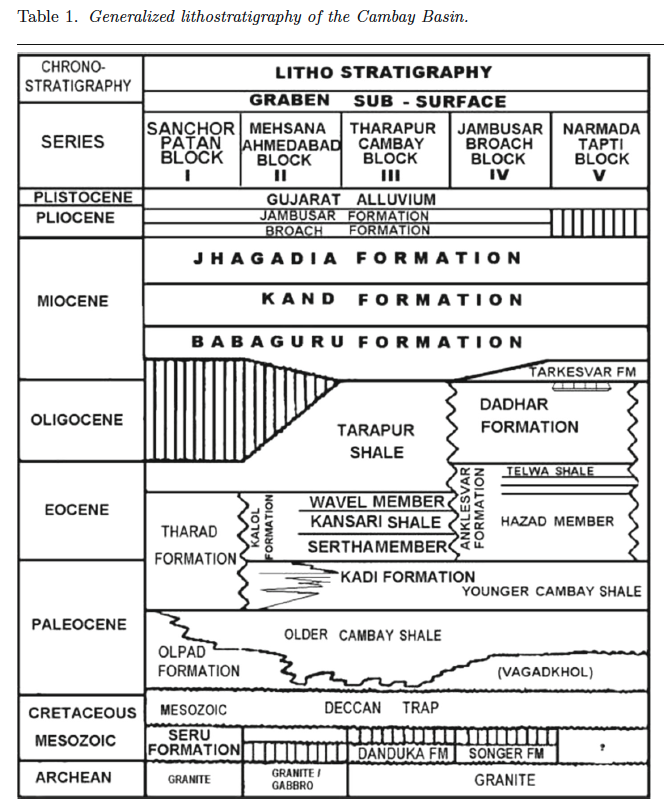Babaguru Fm
Type Locality and Naming
OUTCROP: Named after Babaguru Dongri. Exposed near Babaguru Dongri and Well Broach-6 (interval 2430-2687 m). 257 m thickness in Well Broach-6 [Original Publication: Sudhakar, R. and Roy, T.K. (1959) Progress report on the geology of the tertiary formations of Broach and Surat Districts (1958-59). Unpublished ONGC report.]. Surface name proposed by Sudhakar and Roy (1959), extended into the sub surface by Chandra and Chowdhary (1969). Reference well: Well Nandej-3 (interval 885-1095 m), 210 m thickness.
Lithology and Thickness
Sandstone. In the type section, lithology consists of ferruginous current-bedded sandstone, conglomerate and clay. Maximum thickness about 130 m in outcrops and variable in deeper parts of the basin from 300 to 580 m.
[Figure 1: Rock units and their reference sections in Cambay Basin, (after Pandey et al., 1993)]
[Figure 2: Generalized stratigraphy of the Cambay Basin. (from Jaiswal and Bhattacharya, 2018, J.EarthSyst.Sci., 127:65)]
Relationships and Distribution
Lower contact
Its lower boundary is unconformable with the Tarapur Fm in the north and the Tarkeswar Fm in the southern part of the basin.
Upper contact
The upper boundary is conformable with the Kand Fm. [However, on Dr. Raju's chart for this basin, it underlies the Jhagadia Fm in these central-basin sections.]
Regional extent
GeoJSON
Fossils
This formation is devoid of fauna but palynofossils like Cicatricosisporites venustus, Magnastriatites cauveriensis and Plypodisporites formosus are present.
Age
Depositional setting
Additional Information

